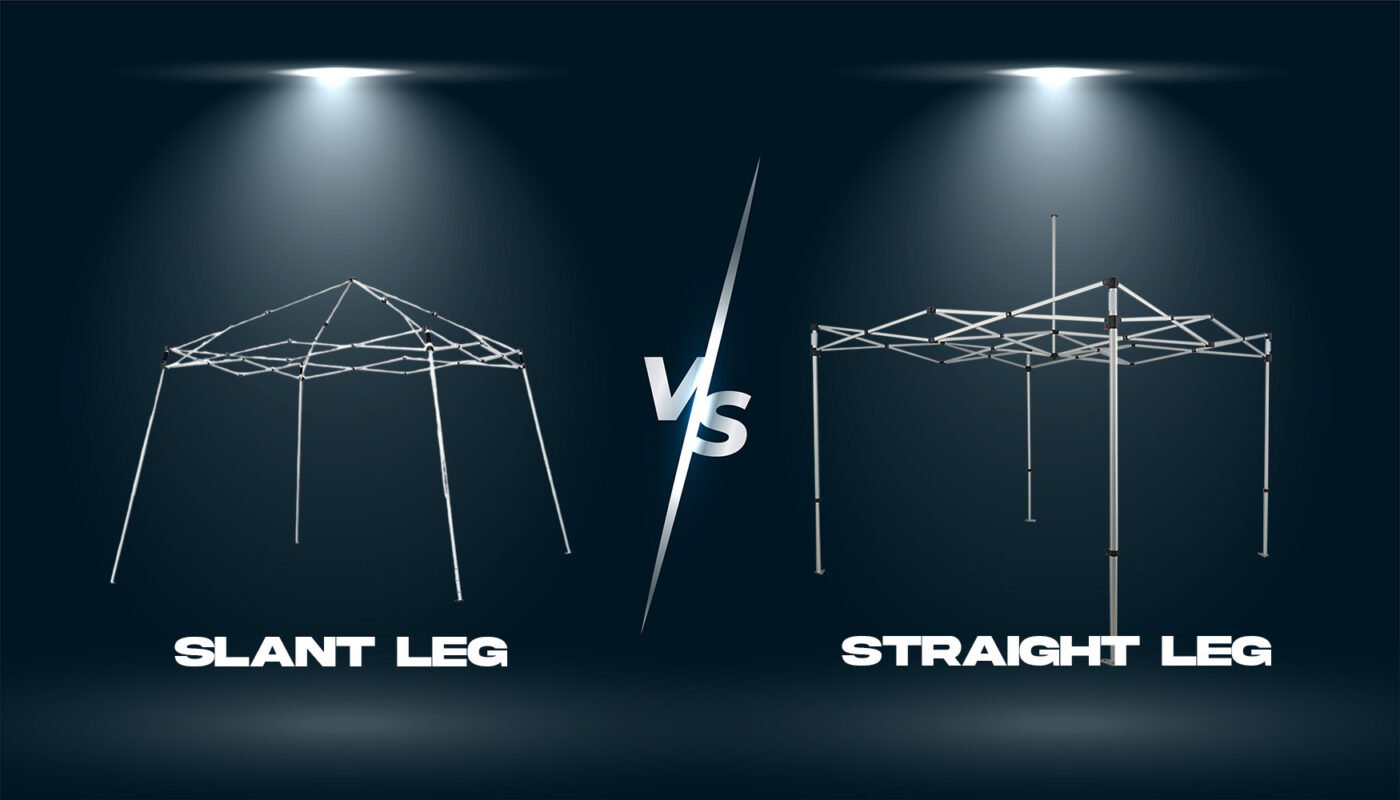Knowledge
Straight Leg vs Slant Leg Canopy Tent: Which One is Right for You?
Imagine setting up for an outdoor event, only to have your canopy tent wobble in the wind, leaving you worried about its stability. It’s a scenario no one wants to face, yet it’s a common concern for many who rely on canopy tents for their outdoor activities, whether it’s a family picnic, a trade show, or a market Are you struggling to choose between straight leg and slant leg canopy tents for your next event? It’s a common dilemma faced by many event organizers and business owners. You want a tent that not only meets your needs but also enhances your event’s appearance.
The wrong choice could mean instability, poor aesthetics, or even increased costs. But don’t worry, we have the solution to help you make an informed decision.
In this article, we’ll break down the differences between straight leg and slant leg canopy tents, so you can select the perfect one for your needs.
Comparing Straight Leg and Slant Leg Canopy Tents
| Feature | Straight Leg Canopy Tent | Slant Leg Canopy Tent |
|---|---|---|
| Stability | Higher | Lower |
| Coverage Area | True to size | Canopy Less than stated size |
| Portability | Heavier | Lighter |
| Cost | More expensive | More affordable |
| Ease of Setup | Moderate | Easier |
| Appearance | More professional | More casual |
Structural Stability
When it comes to stability, straight leg canopy tents take the lead. Despite the triangular appearance of slant leg tents suggesting stability, straight leg tents have a more complete and rational frame support connection structure.
This design ensures that the tent remains firm and steadfast even in adverse weather conditions. The straight legs provide even weight distribution, reducing the risk of tipping over.In contrast, slant leg canopy tents, although designed to spread out the base and cover a larger area, may not offer the same level of stability.
The angled legs can create points of weakness, especially in windy conditions, making them less reliable for long-term or professional use.
Professional vs. Casual Appearance
Straight leg canopies are often preferred for professional settings due to their clean, sleek lines and sturdy appearance. They project a more formal and professional image, which is essential for trade shows, corporate events, and market stalls where appearance can impact customer perceptions.Slant leg canopies, with their more relaxed and casual look, are often chosen for personal use. They are ideal for family gatherings, picnics, or recreational activities where a laid-back appearance is more suitable. Their design tends to blend better with informal settings, making them a favorite for casual outdoor activities.
Weight and Portability
One of the key differences between straight leg and slant leg canopies is their weight and portability. Straight leg tents are generally heavier due to their robust structure.
This added weight contributes to their stability but can make them more challenging to transport and set up. They are best suited for commercial use where durability and stability are paramount.On the other hand, slant leg canopies are lighter and easier to set up. Their reduced weight makes them highly portable, which is ideal for casual or personal use.
If you need a tent for a quick setup at a family picnic or a small outdoor gathering, a slant leg canopy might be the more convenient choice.
Cost Considerations
Cost is always an essential factor when making a purchase decision. Straight leg canopy tents tend to be more expensive due to their sturdier construction and professional appeal. The investment, however, can be justified by their durability and lower maintenance costs.
Our after-sales feedback indicates that straight leg tents have a lower repair rate compared to slant leg tents, which can save you money in the long run.Slant leg canopy tents, being lighter and easier to produce, usually come at a lower price point.
This affordability makes them accessible for individuals or businesses on a tighter budget, but it’s essential to consider the potential trade-offs in terms of stability and durability.
Flexibility and Customization
One notable advantage of straight leg canopy tents is their ability to be combined into larger setups. The straight legs allow for easy connection with other tents, creating expansive covered areas suitable for large events.
This modularity provides flexibility for various event sizes and configurations.Slant leg tents, with their angled legs, are less adaptable for such combinations. While they can cover more ground space individually, they are not as efficient for creating interconnected setups, which might limit their utility for large-scale events.
Conclusion
Choosing between straight leg and slant leg canopy tents ultimately depends on your specific needs and priorities. If you require a sturdy, professional-looking tent for commercial purposes, the straight leg canopy is the superior choice.
Its stability, appearance, and modularity make it ideal for events where presentation and reliability are crucial.
Conversely, if portability and ease of setup are your primary concerns, especially for casual or personal use, a slant leg canopy tent may better suit your needs. Its lightweight design and lower cost make it a practical option for quick and simple setups.
In summary, understanding the strengths and weaknesses of each type will help you make an informed decision, ensuring your next event is a success with the right canopy tent.
